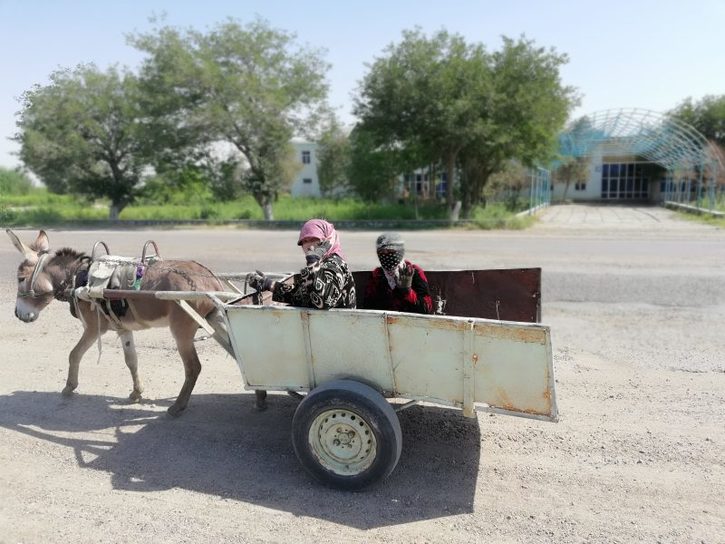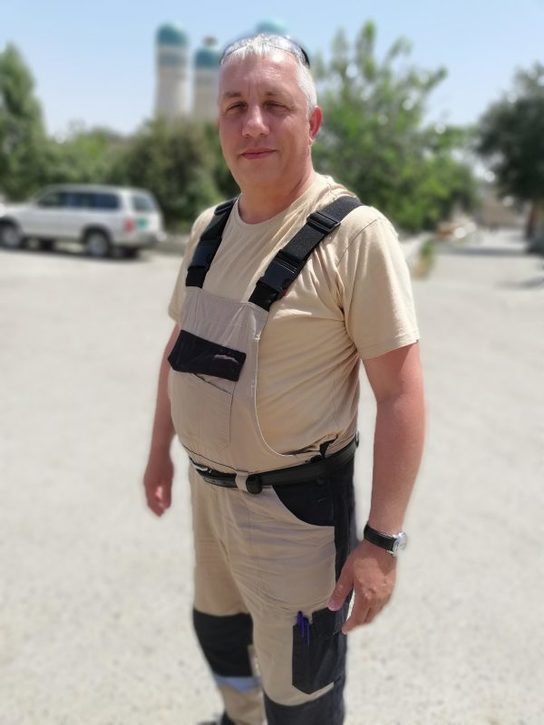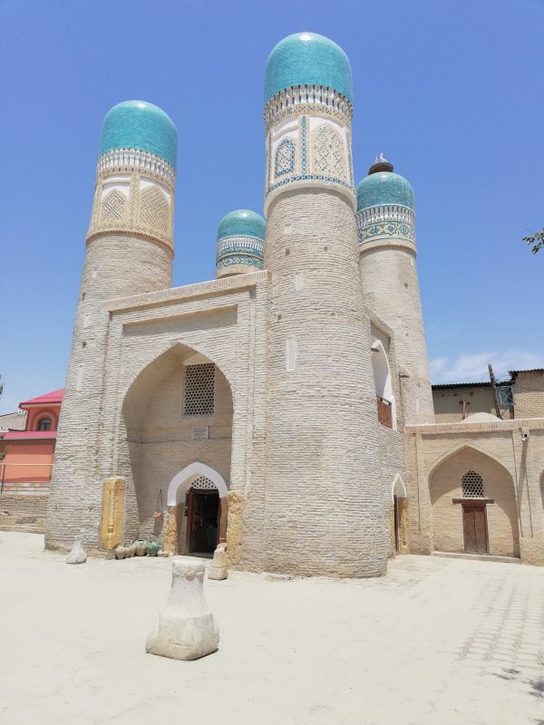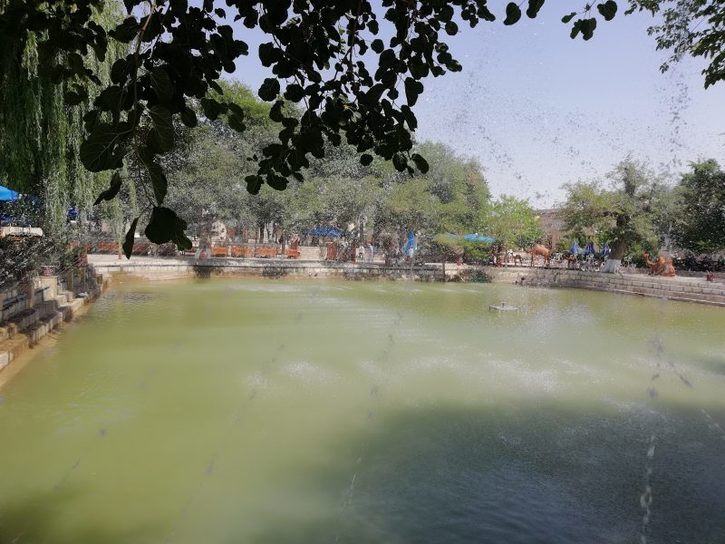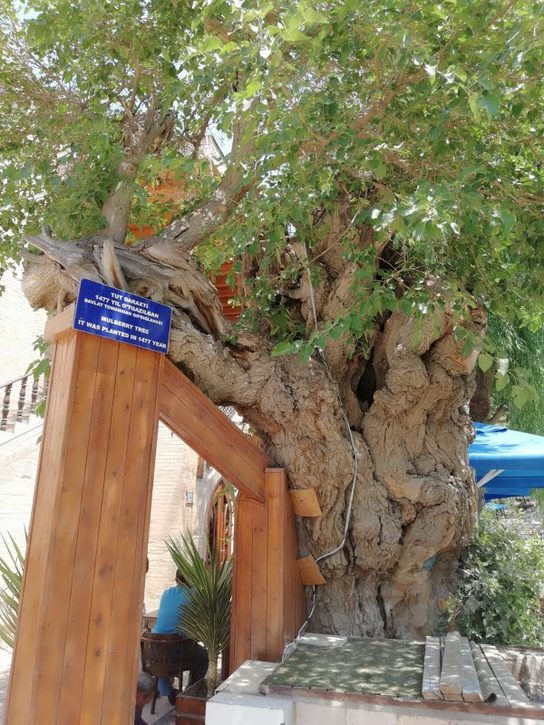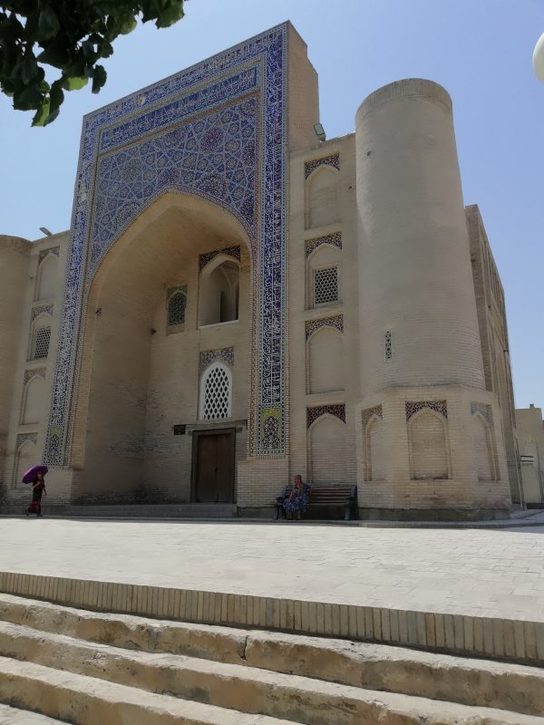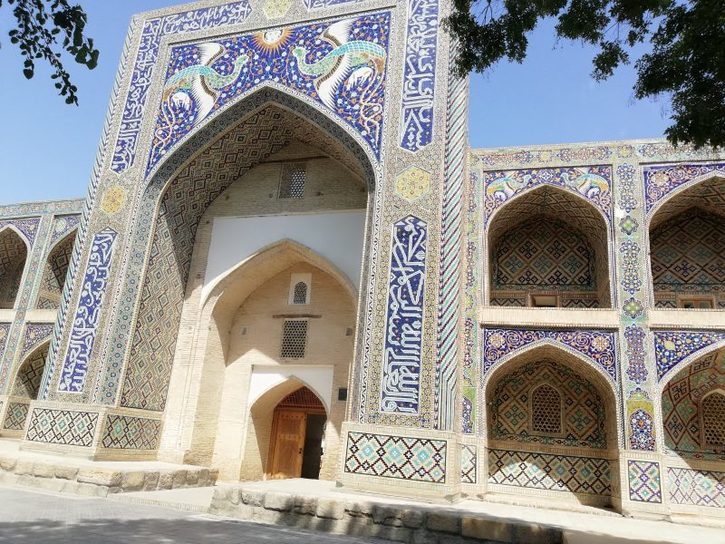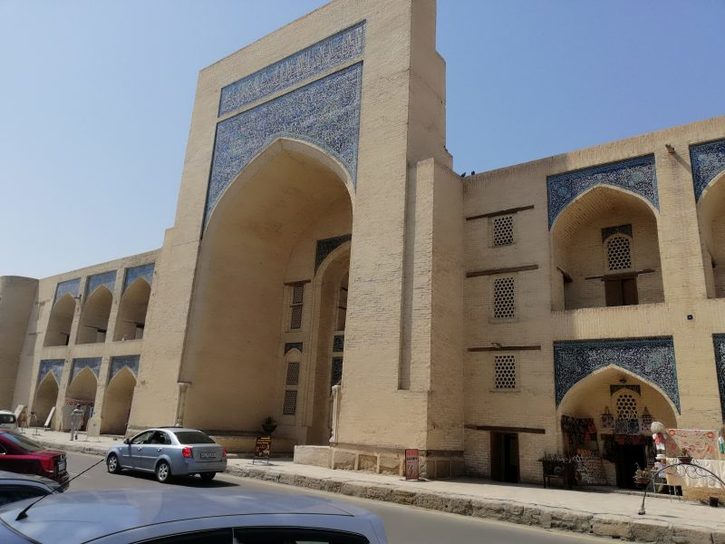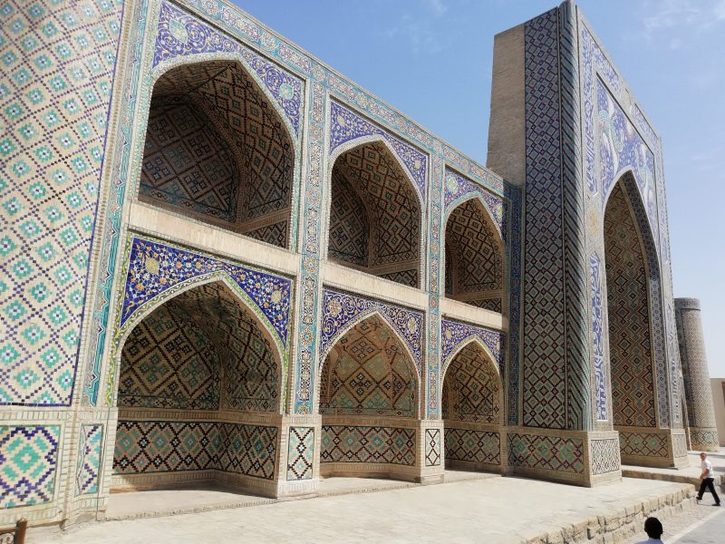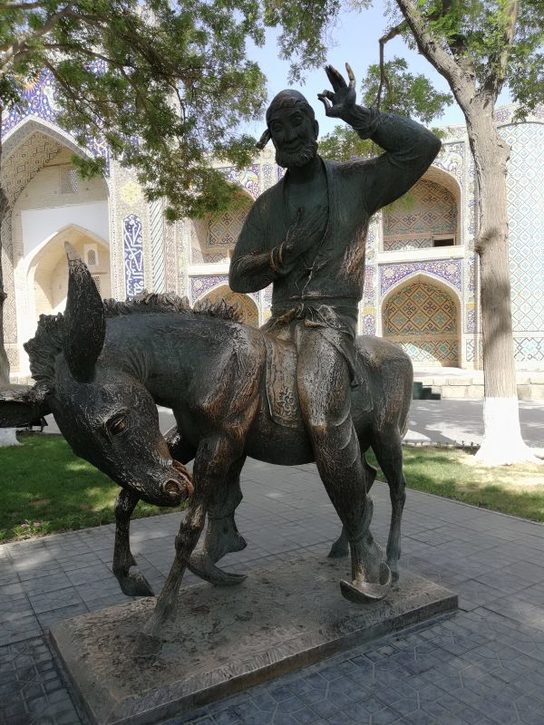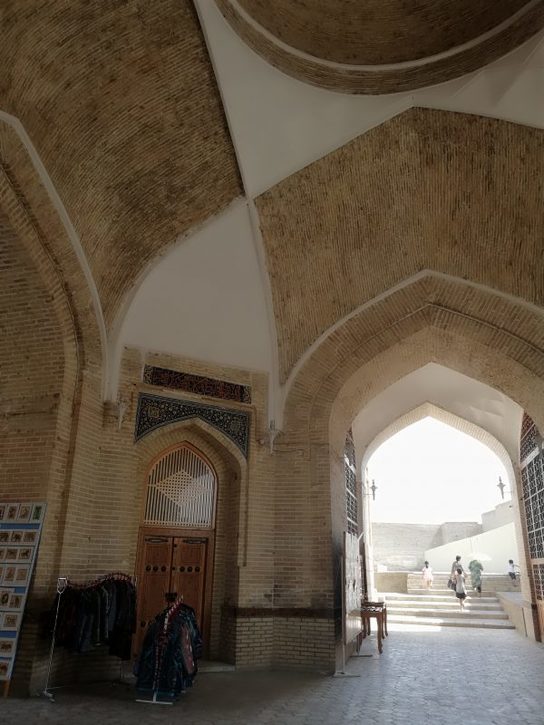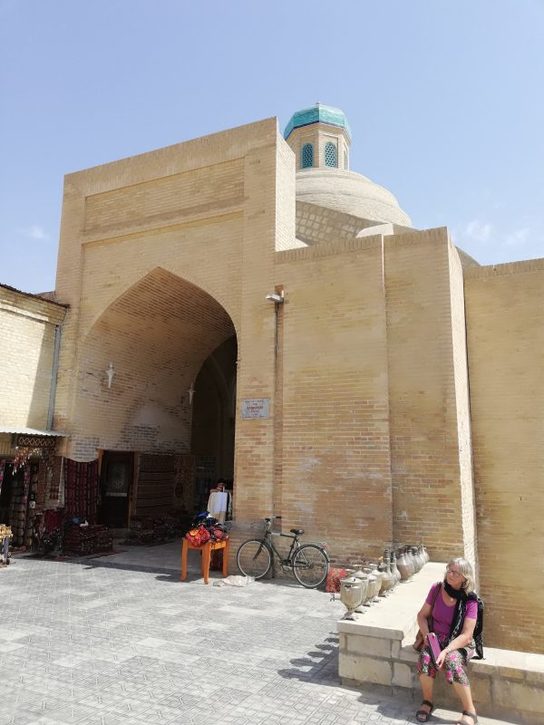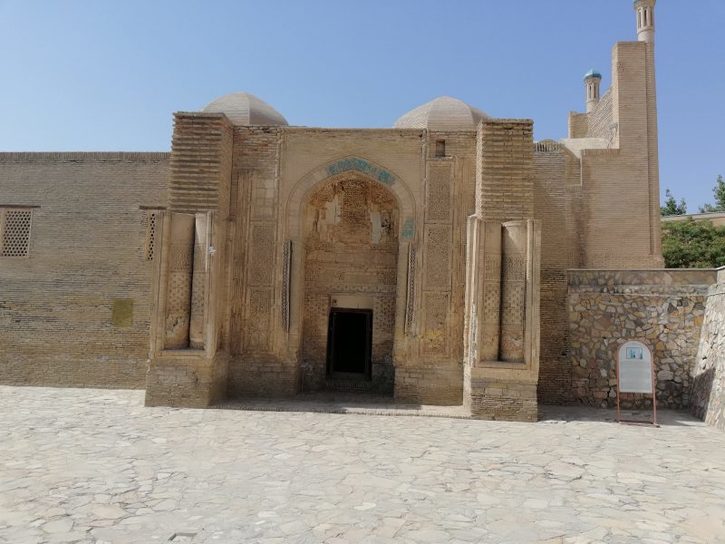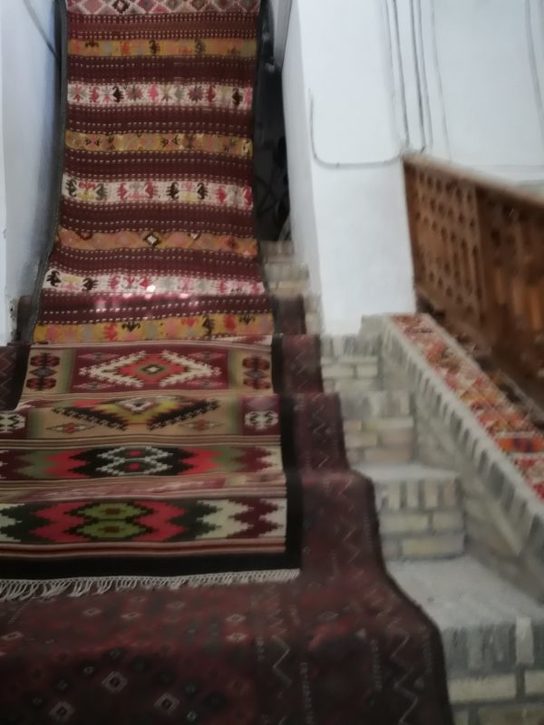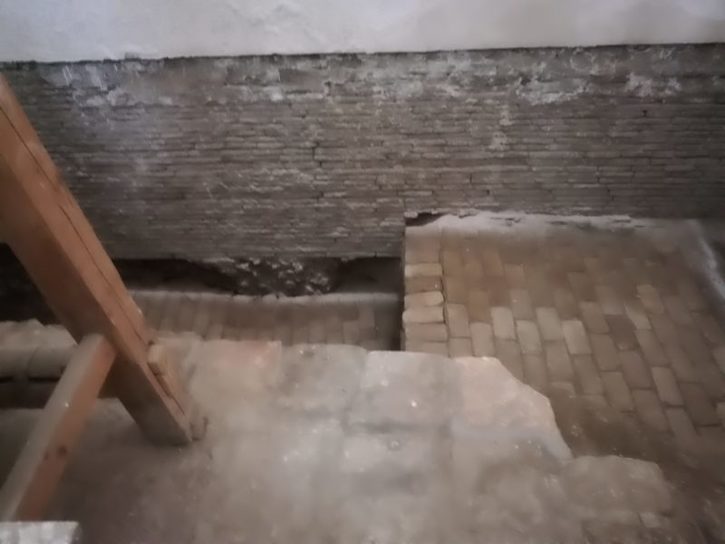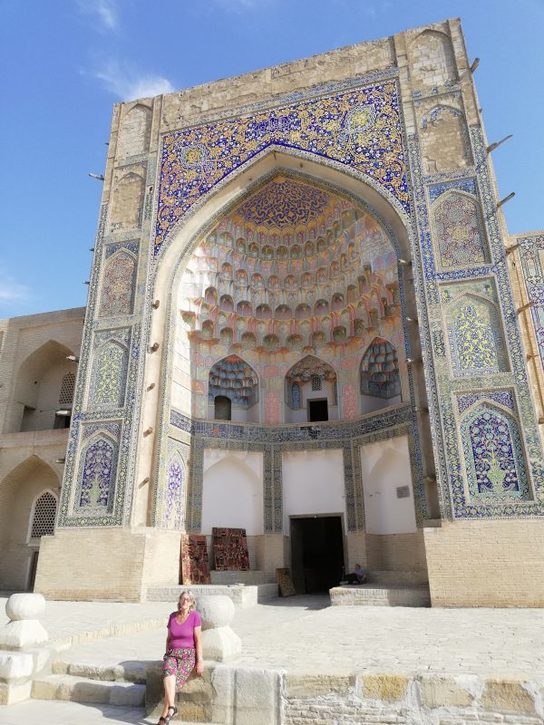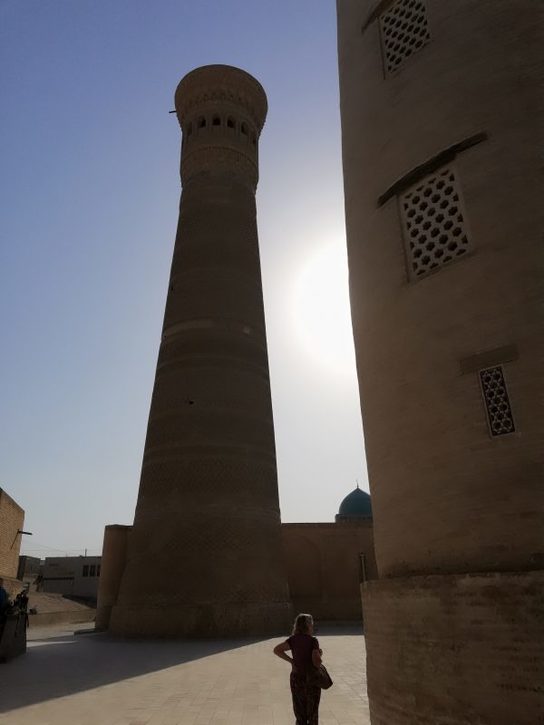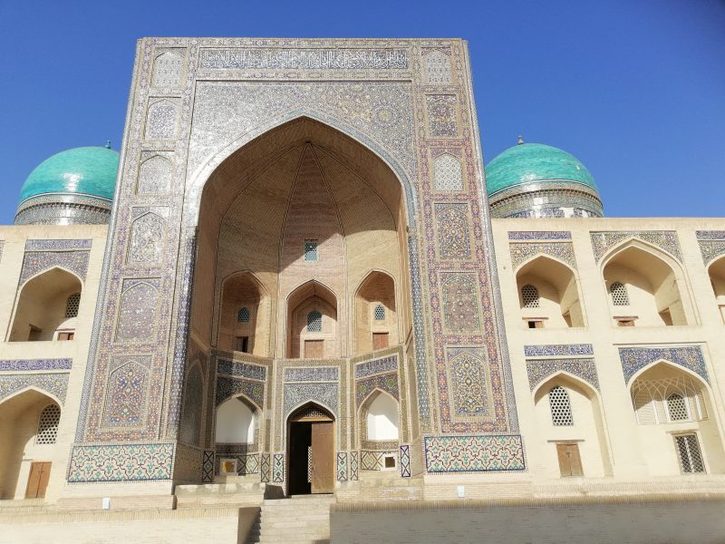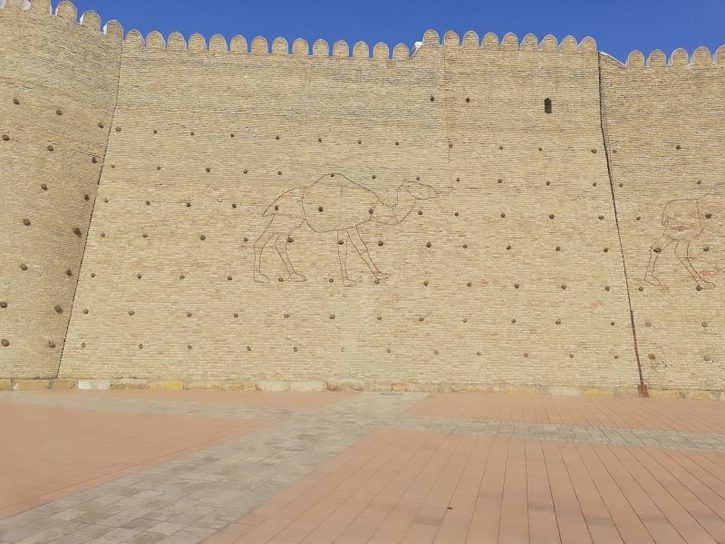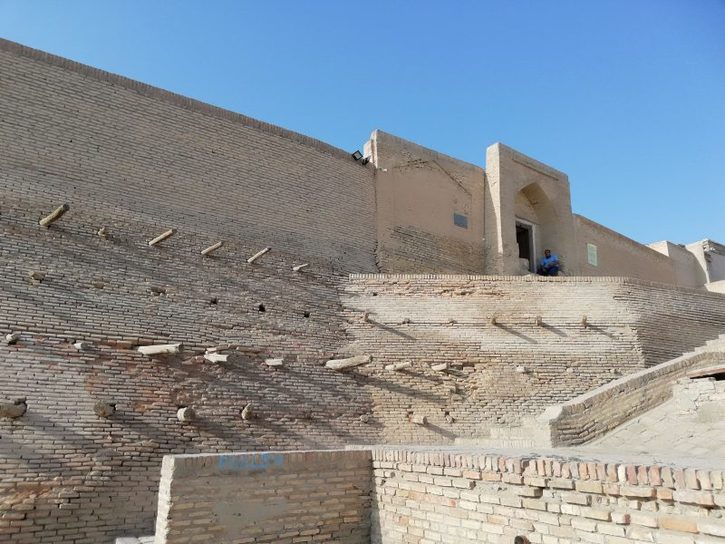Bukhara is a medium-sized town which, like all towns built in the Soviet era, covers a huge area. The few road signs are in Uzbek so we got lost a few times until a landcruiser pulled up alongside and the driver wanted to know if we had driven our vehicle all the way from England. I told him we were trying to get to the Char Minar (“Four Minarets”) and he got out of his vehicle and spent 5 minutes talking to a friend to get directions. Eventually he got back into his vehicle and motioned us to follow him through a maze of narrow streets past mud-brick houses, most evidently the 19th century part of the town. On reaching Char Minar we had a long chat: he is a Russian called Vyacheslav and he is helping develop a gasfield on Uzbekistan’s border with Turkmenistan for Lukoil.
Char Minar is beautiful and one of its four minarets has a stork’s nest on it.The very old pics of Char Minar show storks’ nests but the current one is, sadly, plastic for the tourists. We left the van parked outside Char Minar, which no longer operates as the gateway to a demolished medressa and is full of tourist stuff.
Bukhara developed in the 8th century as the capital of the Samanid state and became Central Asia’s most important religious and cultural centre. Captured by Chinggis Khan in 1220, it became less important than Samarkand until the 16th century when the Uzbek Shaybanids made it the capital of the Bukhara khanate. It eventually had 100 medressas with 10,000 students and more than 300 mosques.
In 1753, Mohammed Rahim, the local deputy of a Persian ruler, proclaimed himself emir and founded the Mangit dynasty which lasted until the Bolsheviks captured Bukhara in 1920. Many of the Mangit rulers were depraved sadists, such as Nasrullah Khan who killed his brothers and 28 other relatives in 1826. In 1841, a British officer Charles Stoddart came to Bukhara to enlist Nasrullah’s help in Afghanistan, but was thrown into the bug pit of the Zindon (dungeon) which he shared with rodents and various scaly creatures. His crime was to fail to bring gifts and not carry a letter from Queen Victoria. In 1842 Captain Connolly came to rescue him, but Britain had retreated from Kabul and Queen Victoria had failed to reply to a letter from Nasrullah. So Connolly was thrown into the bug pit and in 1842 both men were publicly beheaded before a crowd of thousands on the Registan Square. A clergyman, Joseph Wolff, was sent to Bukhara to verify the news, but survived because Nasrullah thought he was hilarious in his clerical clobber.
There were once 200 stagnant pools in Bukhara in which people bathed, washed clothes and obtained drinking water. A succession of plagues decimated the population, and the Soviets drained the pools, leaving only one, the Lyabi-Hauz. We went there and saw the mulberry trees which were planted in 1477. We had a delicious chicken kebab and salad oliviye at a lakeside restaurant. We saw the statue of Hoja Naruddin, a semi-mythical “wise fool” who appears in Sufi teaching tales.
We gasped at the magnificant Nadir Divanbegi Medressa which was built as a caravanserai in 1622 by a Shiite khan and therefore is able to depict a pair of peacocks holding lambs either side of a sun with a human face. Depictions of humans are banned by sunni Islam. On the opposite side of the lake is the Nadir Divanbegi Khanaka, a sufi cloister used for religious ceremonies.
Of the great many domed bazaars in the old town (with the domes designed to draw in cool air) only three remain. We went to all of them and they are all selling tourist tat.
However the Maghoki-Attar is worth seeing. It is Central Asia’s oldest surviving mosque with a 9th century facade. It is built on a 5th century Zoroastrian temple, part of which has been excavated, and an earlier Buddhist temple. Until the 16th century, Bukhara’s large Jewish population were able to use the mosque as a temple.
The Ulugbek medressa is Central Asia’s oldest functioning medressa built in 1417. By the time we arrived at the Kalon Minaret, we were exhausted by the heat which must have reached 45 degrees because it was 42.5 in the evening. Built by Arslan Khan in 1127, it was initially the tallest minaret in Central asia and has survived numerous earthquakes because its 10-metre deep foundations are built on beds of reeds. Chinggis Khan was so impressed by it that he ordered it to be spared. Arslan Khan killed an imam during a quarrel but the imam haunted him in a dream and ordered him to bury him in such a spot that no-one could stand on his head.
The Ark fortress is Bukhara’s oldest building, built in the 5th century. It was bombed in 1920 and is now 80% ruined apart from its massive walls. By this time Jennifer was exhausted so she sat on a low wall on the Registan while I walked round the Ark and saw the Zindon, but was too tired to go up to it and see the bug pit. We got a taxi back for 5,000 soms (50 p) and, in an uncharacteristic eruption of generosity, I gave him a 1,000 som (10 p) tip.
